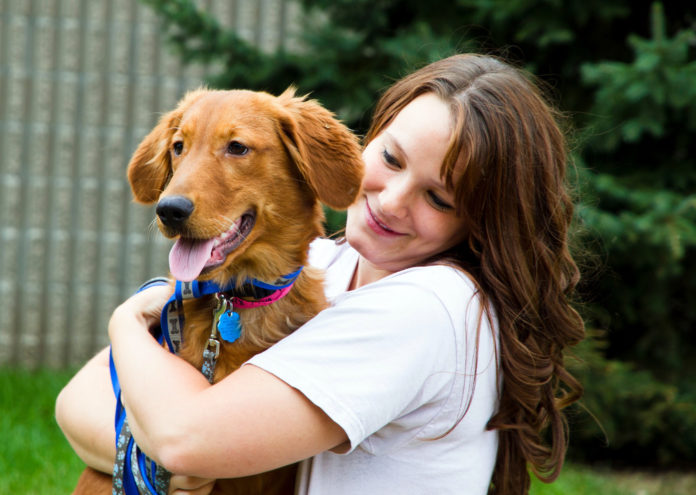The kindness of your heart, and good intentions may not be the only criteria needed to foster an abused dog. A neglected animal may be harder to train, is more prone to “acting out,” and is likely to have developed a host of psychological issues due to its past trauma. Your home may be a breeding ground for these issues to worsen, especially if your household had not been properly screened for “emotional triggers “or inadvertent reminders of the animal’s harrowing experiences.
“It’s important to know what your dog has been through, and to be fully aware of what you signed up for,” Nathan Ouderkirk said of the Helping Hounds Dog Rescue, a small organization in Dewitt, New York which has helped place over 1,200 dogs since the group’s founding in 2009. As a recent addition to the rescue team, Ouderkirk has learned his own lessons through fostering two dogs of his own Rupert and Miles.
“Deciding whether or not a home is safe comes down to a lot of things; are there new people coming in and out of the home at all times? Does the person have territorial pets of their own?” Ouderkik, explained. Depending on the extent of abuse, whether by neglect, starvation, physical or verbal abuse, the animal may need different things in order to become a fully rehabilitated pet. Dogs who have spent extended amount of time in isolation, may need a home that has other pets or dogs. Others might simply need access to open-space and plenty of exercise, if they have been confined to a small area or have had little exposure to the outside world.
“It really depends on how the dog was abused. We usually work to figure that out, to help place dogs in homes they are likely to thrive in,” Ouderkik said. Still, even the smallest of things can upset a vulnerable foster.
A rumbling washing machine, or a door’s tendency to slam shut, for example, are everyday occurrences which may seem harmless, but can actually cause your foster or adoptee to withdraw in an attempt to protect itself. A noisy household filled with children or other pets, can also lead to unpredictably violent behavior which might put you, your new dog, and other occupants of your home at serious risk. This is something Gail Pollack of Rescue Dogs Rock NYC has also discovered in her year of fostering abused and problem dogs.
“When I first got Freddie, he refused to go outside for about four whole months,” Pollack said of her black and white Shitzu, who initially came to her as a foster and is now one of her own.
Freddie was abandoned by his former owner, along with 14 other dogs who were left for dead in a small backyard in Philadelphia. The emaciated survivors, were rescued and transported to Virginia by the Caring Hearts animal rescue team, after months of what looked like a tell-tale case of animal hording. Later it was revealed that the occupants of the house had disappeared, leaving the brood to fend for themselves with no food or water. In a sad turn of events, all of the dogs were unable to be temporarily housed and were facing authentication upon arrival to the Caring Hearts headquarters. Pollack, was notified of the rescue and agreed to take in one of the smallest dogs. Freddie.
Now a docile, loveable animal, Pollack owes Freddie’s rehabilitation to her unwavering patience, and to the important preparations she has made to her home.
“I am completely against caging, but what I do tend to do is fence off areas of my home until the rehabilitated dog is ready to mingle with the others,” she said. Doggy-gates, or grated barriers are perfect solution for dogs that require a quiet and low-activity environment to decompress, and to begin mentally healing without the fear of abuse or harm.
Pollack’s most recent foster Casey, a Chinese Crested- Terrier mix, was in desperate need of exactly that. Due to Casey’s past suffering, the small dog with a charming flopping ear and black paws was deemed “unadoptable,” due to his sporadic behavior and tendency to lash-out. Now after several months, the dog that used to cower underneath the human touch, enjoys long sessions of play time with his owner.
“Not everyone can adopt,” Pollack said with a hint of dejected acceptance in her voice. “But if you can’t adopt, foster. If you can’t foster, volunteer. If you can’t volunteer, donate,” she finished, before stressing that even under qualified adopters can still actively help fight animal cruelty.










